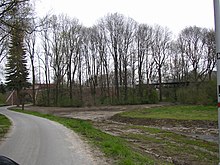Bielefeld district orbits
| Bielefeld district orbits | |||||||||||||||||||||||||||||||||||||||||||||||||||||||||||||||||||||||||||||||||||||||||||||||||||||||||||||||||||||||||||||||||||||||||||||||||||||||||||||||||||||
|---|---|---|---|---|---|---|---|---|---|---|---|---|---|---|---|---|---|---|---|---|---|---|---|---|---|---|---|---|---|---|---|---|---|---|---|---|---|---|---|---|---|---|---|---|---|---|---|---|---|---|---|---|---|---|---|---|---|---|---|---|---|---|---|---|---|---|---|---|---|---|---|---|---|---|---|---|---|---|---|---|---|---|---|---|---|---|---|---|---|---|---|---|---|---|---|---|---|---|---|---|---|---|---|---|---|---|---|---|---|---|---|---|---|---|---|---|---|---|---|---|---|---|---|---|---|---|---|---|---|---|---|---|---|---|---|---|---|---|---|---|---|---|---|---|---|---|---|---|---|---|---|---|---|---|---|---|---|---|---|---|---|---|---|---|---|
| Course book section (DB) : | last: 214a Bielefeld – Enger 214d Bielefeld – Werther |
||||||||||||||||||||||||||||||||||||||||||||||||||||||||||||||||||||||||||||||||||||||||||||||||||||||||||||||||||||||||||||||||||||||||||||||||||||||||||||||||||||
| Route length: | 23 km | ||||||||||||||||||||||||||||||||||||||||||||||||||||||||||||||||||||||||||||||||||||||||||||||||||||||||||||||||||||||||||||||||||||||||||||||||||||||||||||||||||||
| Gauge : | 1000 mm ( meter gauge ) | ||||||||||||||||||||||||||||||||||||||||||||||||||||||||||||||||||||||||||||||||||||||||||||||||||||||||||||||||||||||||||||||||||||||||||||||||||||||||||||||||||||
| State: | North Rhine-Westphalia | ||||||||||||||||||||||||||||||||||||||||||||||||||||||||||||||||||||||||||||||||||||||||||||||||||||||||||||||||||||||||||||||||||||||||||||||||||||||||||||||||||||
|
|||||||||||||||||||||||||||||||||||||||||||||||||||||||||||||||||||||||||||||||||||||||||||||||||||||||||||||||||||||||||||||||||||||||||||||||||||||||||||||||||||||
The Bielefelder Kreisbahnen were owned by the former Prussian district of Bielefeld , which today largely forms the city of Bielefeld . Starting from the city of Bielefeld, three meter- gauge small railways opened up the area; then as now, their endpoints were outside the district in the neighboring districts. With the exception of the Sudbrackbahn, they were operated exclusively with steam locomotives until they were closed.
history
On April 1, 1901, the " Narrow Gauge Railways of the District of Bielefeld" began to operate from the terminus "An der Pottenau" on Herford Street about 800 meters from the state train station in a northerly direction via Schildesche to Enger , where the Herford Kleinbahn GmbH line was reached. with which a joint venture existed until 1934. At the same time, the line to Werther (Westphalia) branched off westward in Schildesche .
The third route followed on May 1, 1909 via Heeper Fichten, Heepen Hassebrock to Eckendorf Runkelkrug. It was only used for thirteen years because the planned extension towards Bad Salzuflen in the Principality of Lippe had not come about. As early as 1921, traffic was idle for a short time, but as there were protests among the population, operations were resumed with fewer trips. At that time, the Kreisbahn was the only public means of transport between Heepen and Bielefeld, because the planned tramway construction was not progressing. On April 30, 1922, all traffic was finally stopped and in 1925 the route was dismantled. The total length of the circular path from 33 km was reduced to 26 kilometers, although the new circular station on April 21, 1910 on Eckendorfer Strasse extended the main route by 0.7 kilometers. In addition, a standard-gauge freight connection railway was added to the Sudbrack area in 1926 .
After the train traffic had reached a considerable volume in the war and early post-war period, serious competition arose for the circular railways from private bus lines, which led to legal disputes over concession rights from 1951 onwards. As a result, a settlement was made in which the district of Bielefeld undertook not only to forego its own bus service, but also to give up all rail passenger services, which were then discontinued at relatively short notice in the current timetable on February 13, 1954. While freight traffic to Enger ended on April 30, 1955, the line to Werther was also closed on August 1, 1956. When the Sudbrackbahn with the industrial track was handed over to the Deutsche Bundesbahn on October 31, 1957 , the circular railway company finally ended.
All tracks were dismantled. Since 1968, today's tram line 1 between Johannesstift and the final stop Schildesche An der Reegt has been using the former small- scale railway line. Some sections of the former route have become scenic hiking and cycling trails, for example between Jöllenbeck and Pödinghausen. There are still some station buildings (including in Schildesche, Jöllenbeck, Dornberg, Wallenbrück and the former reception building in Werther, which was used as a restaurant “Gleis 5”) as well as two bridges in Bielefeld-Schildesche, which were restored in 2004 and 2008 (over the Johannisbach ) and on the Talbrückenweg in Werther.
business
In the 1939 timetable, six pairs of trains ran daily to Werther and around eight pairs of trains to Enger. The travel time for the 13.9 kilometer route to Werther was around 40 minutes, and the trains to Enger took 45 to 50 minutes.
vehicles
Operation began with four steam locomotives with a B1 'wheel arrangement from Hagans . In 1903 and 1908 three more powerful locomotives with three coupled axles from Borsig were added. The locomotives from the initial stock were replaced in the 1920s by two four-axle locomotives from Borsig, but one of them was swapped for a locomotive from the Herford small railway, which was identical to the older Borsig locomotives, soon after commissioning. All locomotives were scrapped in 1956. In 1920, a standard gauge locomotive was also procured from Borsig for the Sudbrackbahn. All steam locomotives had names. In 1946 a regular gauge diesel locomotive of the type Köf II was procured, which was sold to the DB in 1957.
For passenger traffic, there were 14 four-axle third-class passenger cars, which were manufactured by the Düsseldorfer Eisenbahnbedarf, formerly Waggonfabrik Weyer . Car 10 of these has been kept operational by the German Railway Association . In addition, wagons 2 and 7 are not operational at the Märkische Museum-Eisenbahn , while wagon 8 is currently being refurbished as an exhibit in the Kleinbahnmuseum Enger . The cars 11 and 12 were modernized in 2004 at the Borkumer Kleinbahn , where they are still used sporadically in amplifier trains. In 1949 there were also three baggage cars , 34 trolleys and a large number of freight cars.
literature
- Gerd Wolff: German small and private railways. Volume 6: North Rhine-Westphalia (northeastern part). EK-Verlag, Freiburg 2000, ISBN 3-88255-664-1 , pp. 57-73.
- Rainer Kotte: The Bielefelder Kreisbahnen. 2nd Edition. Uhle & Kleimann, Lübbecke 2002, ISBN 3-928959-37-9 .
Web links
- KB Museum Enger
- metro.webseb.de Stadtbahn and Bielefelder Kreisbahn (English)
- DR course book 1944
- Memories of the Bielefeld circular railways
- History of the Bielefelder Kreisbahnen (private homepage, German)
Individual evidence
- ↑ http://www.deutsches-kursbuch.de/2_174.htm
- ↑ http://www.museumseisenbahn.de/jfahrzeug/19.htm
- ↑ http://www.railway-station.de/data/Enger-Exponate.html
- ↑ http://www.schmalspur-ostwestfalen.de/index.php?nav=1406943&lang=1
Coordinates: 52 ° 3 ′ 32.5 " N , 8 ° 30 ′ 52.1" E


